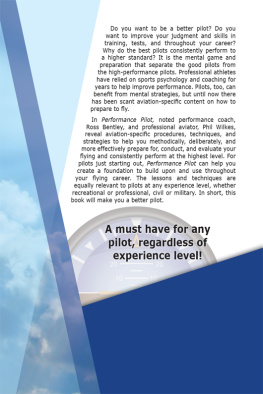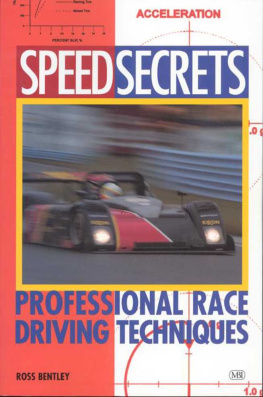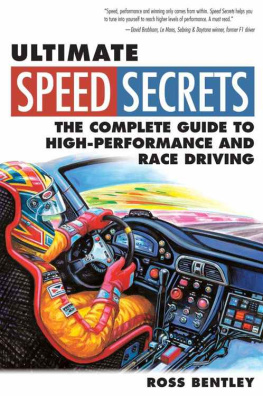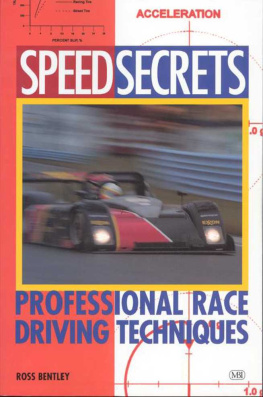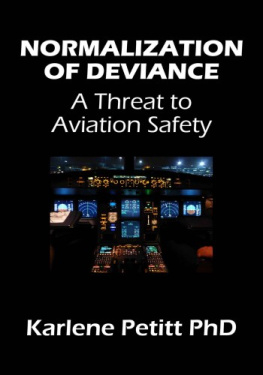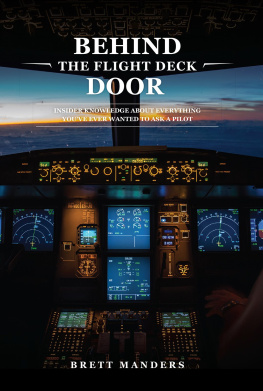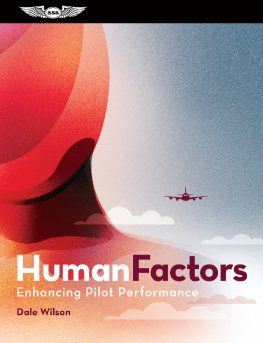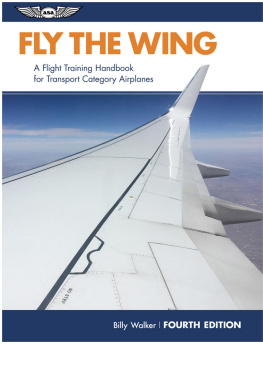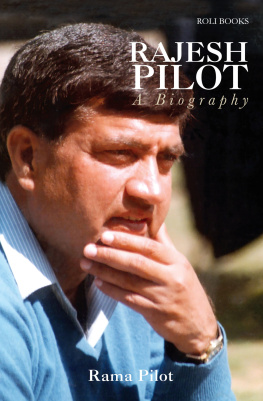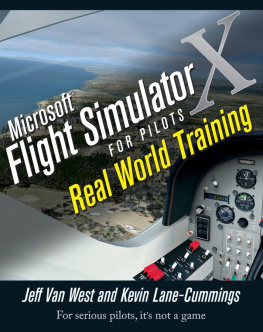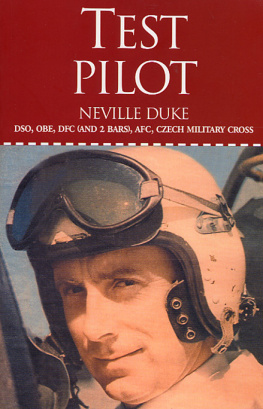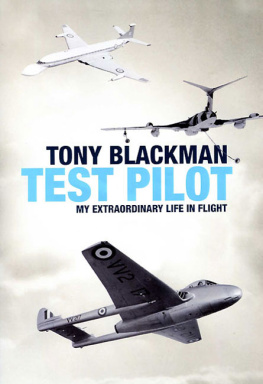Contents
Guide

A huge thank you to Andrew, Anthony, Barry, Brent, Chris, Feng, George, Jaimie, Mark, Marq, Maz, Robin, Russell, Thomas, and Zo. Our book is all the better for your invaluable contributions.

The better the quality and the more quantity of input from your senses that you can process, the better the output and the better your performance will be. []
Every day, practice being aware. []
The more reference points you have, the fewer errors you will make. []
Minimize errors through maximizing sensory input. []
The better the information your senses provide to your brain, the more sensitive youll be to what the aircraft is doing and what it needs. []
Use g-sensing sessions to improve your ability to fly at the appropriate g-load for the maneuver youre flying. []
Practice doesnt make perfect; only perfect practice makes perfect. []
Fly in your mind before flying in the aircraft. []
The more you learn, the better you get; the better you get, the more successful you will be. Focus on learning and success will follow. []
MI + A = G []
If it seems youre not improving, youre about to. []
If a change doesnt work the first time, rethink and retry. []
Sensory input and awareness are the keys to flying proficiently, no matter what the maneuver is. []
The better your programming, the better youll perform in pressure situations. []
Natural talent is just more (and better) practice. []
What you practice is just as important as how much you practice. []
Increase your awareness by debriefing. []
Preparation is not just one thing; its everything. []
Practice how you plan to test and then youll test as you practiced. []
Replay past successes to trigger a performance state of mind. []
Develop and use a Pre-Planned Thought (PPT). []
Make your thoughts non-judgmental. []
Replace negatively-phrased instructions and thoughts with positively-framed ones. Focus on what you want. []
Practice is programming. []
Relax, use less effort, and just let it happen. []
Challenge + Belief = Flow []
Focus on your performance and the results will look after themselves. []
Dont set expectations; focus on the possibilities and your potential. []
What you believe is what you get. []
Whether you believe you can or believe you cant, either way youre correct. []
Stretch your belief system, bit by bit, through self-talk and mental programming. []
Use your strengths to program over the top of weaknesses. []
If you need to optimize performance, explore the aircrafts behavior. []
Be comfortable being uncomfortable. []
Be prepared by preparing mentally. []
Focus on what you love about flying. []
If you want to perform at your absolute peak, you owe it to yourself to be as physically fit as possible. []
Establish a good seating position. []
Learn how to learn, and you will never stop improving. []
Be open to ever-improvement. []
The more you put into becoming a better pilot, the more fun you will have! []
Have fun! []

This list of sample self-coaching questions is not meant to be definitive or exhaustive. It serves purely to act as a guide to get you started developing your own list of self-coaching questions best suited to your needs.
Pre-Flight and Engine Start
Did I ensure that all required documentation was on board?
Did I obtain pertinent weather forecasts and correctly interpret them?
Was my flight planning accurate and complete?
Was my fuel order legal and sufficient?
Was the loaded fuel loaded verified against fuel order?
Was airworthiness checked and correct dispatch deviation procedures applied?
Were all items of the pre-flight inspection performed correctly?
Were my performance calculations correct?
Were weight and balance calculations correctly performed?
Did I brief all appropriate and pertinent information?
Were radio aids correctly set and identified for departure?
Was the flight management system correctly loaded and utilized?
Was the engine start procedure applied correctly?
Did I plan for and (self-) brief contingency procedures?
Taxiing for Departure
Can I ease on/off the brake pedal more gently?
How is my directional control?
How is my speed control?
Am I using throttle against brakes?
Did I apply appropriate safety procedures crossing runways (e.g., lookout and strobes on)?
Take-Off and Climb
Did I cross check runway in use and clearances?
Were hot or cold weather procedures applied (where applicable)?
Did I assess the visibility requirements were met?
Did I check the windsock against aircraft crosswind limits and wind used for performance calculations?
Did I correctly apply take-off minima?
Did I line up on the centerline?
Do I smoothly apply power?
Do I sufficiently allow for torque affect?
How far ahead do I look when taking off?
Can I look farther ahead?
Is my crosswind technique appropriate?
Were correct multi-crew callouts made?
Is my rotation rate appropriate?
Did I attain and maintain the desired target attitude?
Was my transition from visual to instrument flight smoothly flown?
If applicable, were correct contingency procedures applied (e.g., RTO or EFATO)?
How is my speed maintenance in the climb?
Was the power reduction and gear/flap, retraction sequence correctly applied?
Did I meet all the necessary altimetry requirements?
Were appropriate autoflight modes used on departure?
Did I comply with all applicable noise abatement, SID, and ATC departure requirements?
How is my level off from the climb?
Were correct procedures applied at transition altitude and top-of-climb?
Cruise
Did I monitor the flight progress (navigation, fuel and communications logs)?
Did I comply with all ATC instructions?
Did I obtain updated and relevant weather forecasts?
Did I satisfy LSALT requirements?
How was my track keeping?
How was my altitude maintenance?
How was my speed control?
Did I apply the correct turbulence penetration and weather avoidance techniques?
Did I comply with all state requirements?
Did I make appropriate use of the flight management system?
Was the aircraft operated within its limitations envelope?
Did I comply with relevant rules of the air (e.g., right-of-way, ETOPS, RNP, RVSM)?
Did I remember to notify my company of arrival requirements?
Maneuvers
Is my lookout adequate?
How consistent is my maneuver entry speed?
What is my rate of g-application?
What would happen if I changed my entry parameters? Speed? G-load?
Should my control inputs be smoother or crisper?
Exactly where should my reference points be?
Where should I be looking at each stage? Am I?
Did I exit my figures on line?
What can I do to perfect the entry, mid, and exit phases?
Did I respect my minimum operational height?
Descent and Arrival
Was weather for destination and alternate airports obtained?
Were the correct charts selected for STAR and arrival?
Next page
